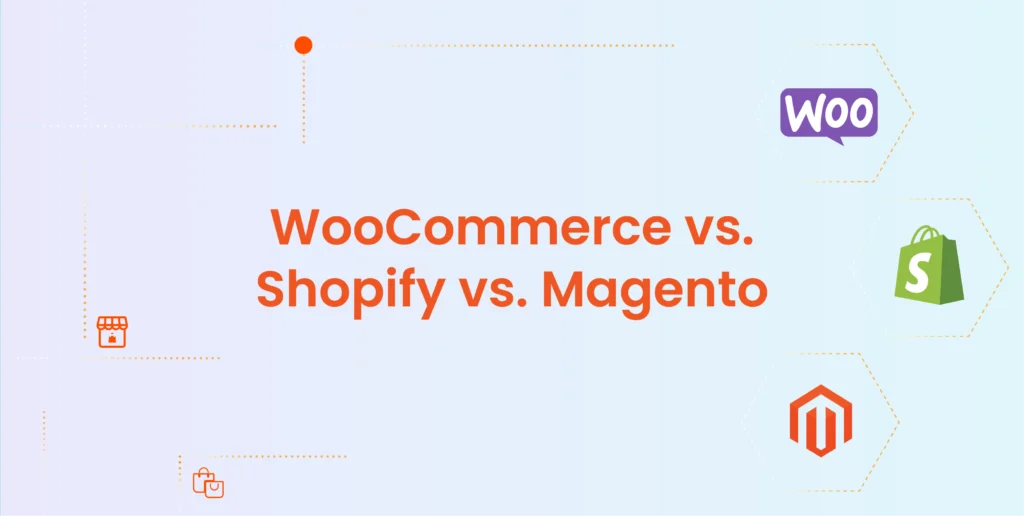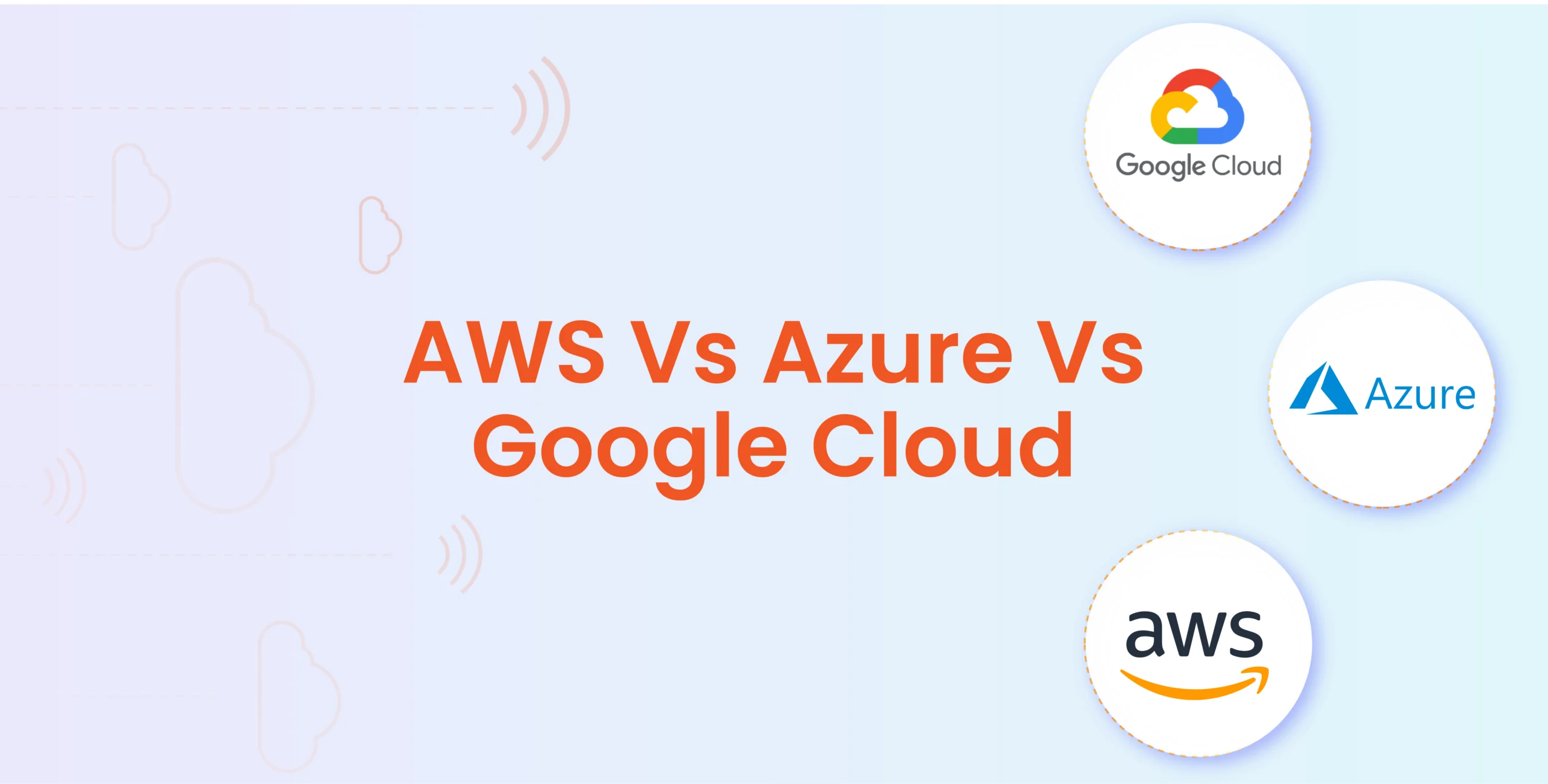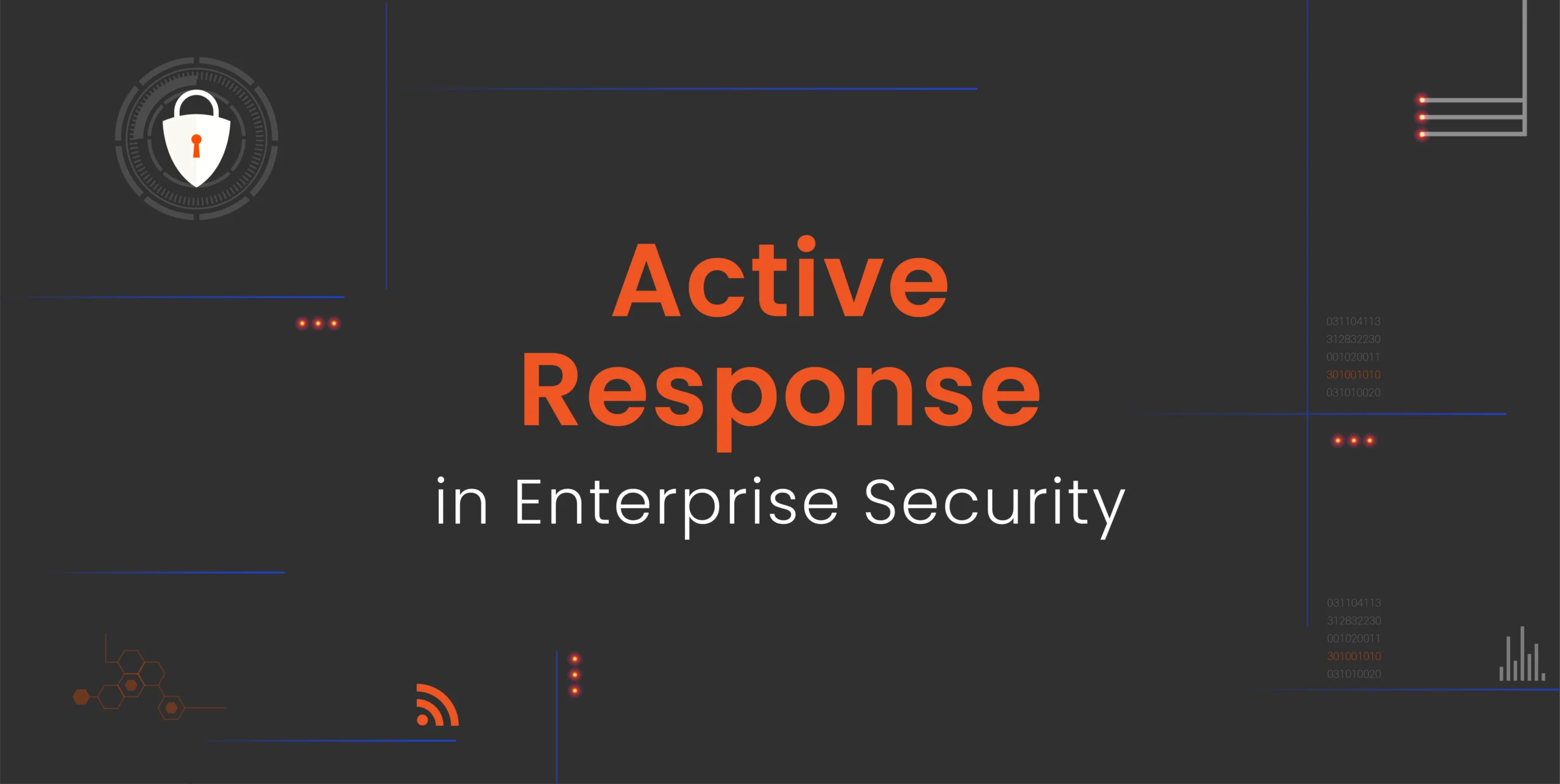What determines whether an online store thrives or struggles? Often, it comes down to the platform powering it. For business owners across the U.S., from small retailers in Denver to expanding brands in Boston, your e-commerce solution is the foundation of your digital success. In 2025, with online shopping reaching new peaks according to Insider Intelligence, selecting the right platform is not just a decision, it’s a critical step to remain competitive. Shopify, WooCommerce, and Magento (known as Adobe Commerce) stand out as three leading options, each designed to address distinct needs and goals.
This guide dives into the essentials. We’ll compare WooCommerce vs. Shopify vs. Magento across key factors: ease of use, customization, cost, scalability, and more, delivering clear, actionable insights for business owners and designers. Whether you’re launching a new venture, refining a unique store, or scaling an enterprise, you’ll find practical guidance rooted in today’s e-commerce landscape. With U.S. online sales exceeding a trillion dollars and continuing to grow (Statista), the stakes are significant, and informed choices matter. To help you navigate this, let’s break down what these platforms bring to the table in 2025.
Overview of the Platforms: What Makes Them Distinct?
Now that we’ve set the stage, let’s take a closer look at what differentiates these three platforms. When evaluating e-commerce solutions, it’s about what they deliver for your business, and Shopify, WooCommerce, and Magento (Adobe Commerce) each bring a unique approach.
Shopify offers a hosted solution ideal for those starting out. It’s an all-in-one package that manages hosting, security, and updates, allowing you to prioritize sales over technical details. Small business owners in cities like Nashville or Boise rely on it, supported by its global reach of over 6 million stores (Shopify).
WooCommerce takes a different path, integrating seamlessly with WordPress for a highly customizable, open-source experience. If you’re familiar with WordPress or value the ability to fine-tune every aspect, it’s an excellent fit. You can start at no cost and build a store that reflects your brand’s identity, whether you’re a craftsman in Portland or a retailer in Philadelphia. The tradeoff is that hosting and maintenance fall on your shoulders, a worthwhile exchange for the control it provides.
Magento, now Adobe Commerce, is engineered for larger operations. This platform delivers enterprise-level scalability and robust capabilities, making it ideal for businesses with complex requirements, such as managing extensive product catalogs or international markets. Major brands like Nike depend on it for good reason, though it demands technical expertise or a dedicated team to unlock its full potential. These three platforms each carve out their own space, and understanding their strengths is the first move toward making the right choice.
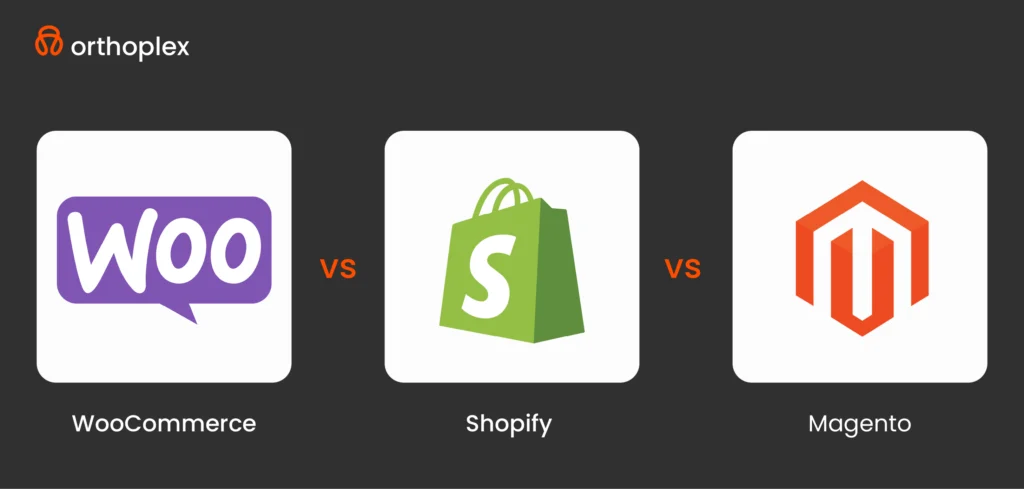
Ease of Use: Which Platform Suits Beginners Best?
With a clear picture of what sets these platforms apart, the next question is how easy they are to use. For anyone launching an online store, especially those new to e-commerce, simplicity can be the difference between a quick start and a stalled effort. Time spent wrestling with setup is time not spent building your business, so ease of use matters more than you might think.
Let’s see how Shopify, WooCommerce, and Magento measure up for beginners and seasoned users alike in 2025.
Shopify stands out with an intuitive approach that requires no technical background. Its drag-and-drop builder lets you set up a store in hours, add products, adjust themes, and configure payments through a straightforward dashboard. Small business owners, often turn to it for that reason. Hosting, updates, and security are all managed for you, freeing up your focus for growth. Users highlight its simplicity as a key strength, often calling it a “plug-and-play” solution, backed by robust features.
WooCommerce, built on WordPress, takes a slightly different tack. You’ll need to set up a WordPress site, secure hosting, and install the plugin before diving into the store itself. A setup wizard smooths the process, but it’s more involved than Shopify, think choosing a hosting plan and adjusting settings on your own. For those already running a WordPress site, it feels like a natural extension. Beginners might find the initial steps daunting, though ample community resources help bridge the gap (WooCommerce Docs). With some effort, it’s accessible enough to get rolling.
Magento, now Adobe Commerce, sits in a league of its own. Designed with complexity in mind, it’s not built for quick starts. Setting it up means arranging hosting, installing the platform, and often tweaking code, tasks that typically require a developer’s touch. For enterprise-level businesses that investment yields powerful results. But for startups or small teams lacking technical expertise, it’s a steep hill to climb. Its advocates insist the effort pays dividends for ambitious projects, just not for those seeking an easy launch.
Customization & Design: How Much Control Do You Get?
Having explored ease of use, let’s turn to customization and design, where your store’s identity and functionality come to life.
For businesses aiming to stand out and developers looking to showcase their skills, this is a critical piece of the puzzle. The ability to shape your store’s look and operations can elevate it from functional to exceptional. Here’s how Shopify, WooCommerce, and Magento deliver control, or hold it back, in 2025.
Shopify provides a strong foundation with a range of themes and app-driven customization. Its library of free and premium themes, editable via a visual editor, pairs with an app store offering tools like reviews or analytics. Businesses can achieve a polished look quickly, which suits clients who value efficiency. However, deeper tweaks require knowledge of Liquid, Shopify’s coding language, and full code access remains restricted. That balance works for many, though developers might find the boundaries limiting when pushing for highly bespoke solutions.
WooCommerce opens the door wider, leveraging WordPress’s ecosystem for extensive flexibility. With thousands of themes and plugins, many free or affordable, you can tailor everything from checkouts to product layouts. It’s a dream for developers and a boon for clients who want a store that’s truly their own. Being open-source, it invites unrestricted code changes, though that freedom comes with a need for time and expertise. The result is a platform that scales with your vision, provided you’re equipped to steer it.
Magento, now Adobe Commerce, offers unmatched customization potential. Built for intricate setups like multi-store operations or unique product configurations, it’s a favorite among enterprises. Developers thrive with its open-source framework, shaping every element from design to workflows (Adobe Commerce DevDocs). That level of control is a game-changer for complex needs, but it demands significant technical skill. Clients gain extraordinary flexibility, yet they’ll rely heavily on a capable team to bring it to fruition. For those who can manage it, the possibilities are vast.
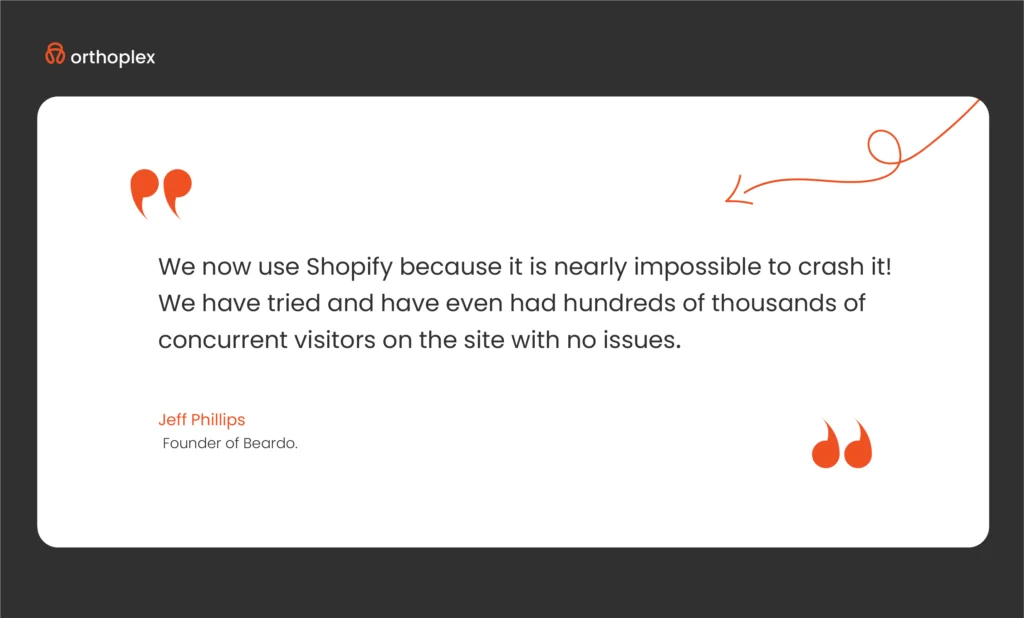
Cost Breakdown: What’s the Real Investment?
Beyond features, the financial side of these platforms shapes your decision, both the upfront costs and the long-term expenses. Understanding what you’re signing up for helps align your budget with your goals. Let’s break down what Shopify, WooCommerce, and Magento will cost you in 2025, from launch to growth.
Shopify operates on a clear subscription model: $39 for Basic, $105 for Shopify, and $399 for Advanced, including hosting and core tools (Shopify Pricing). Transaction fees apply, 2.9% plus 30 cents per sale on Basic unless using Shopify Payments, and apps can add $5 to $50 monthly each. For a small business in Houston, it’s a predictable expense, though premium themes ($150-$350 one-time) and app reliance can increase the tally. Developers note its simplicity comes at the cost of add-on creep, but it’s a reliable choice for those who prefer structure over surprises.
WooCommerce starts at zero cost, an appealing hook for budget-minded businesses in Minneapolis or Raleigh (WooCommerce). But the reality kicks in fast: hosting ranges from $5 to $50 monthly based on traffic, a domain costs $10-$15 yearly, and premium themes or plugins ($50-$200 each) pile up for a professional setup. Developers appreciate the low entry point and the ability to scale it as needed, whether lean or robust. Clients should plan for those extras, though, it’s affordable at first, but success means investing in the pieces that make it work.
Magento, is the priciest of the trio, aimed at enterprises in Seattle or Boston with substantial resources. The open-source version is free, but hosting can span $50 to $500 monthly, and development, covering setup and maintenance, often reaches thousands (Adobe Commerce Pricing). The Commerce edition starts at $22,000 annually. Developers can build intricate systems with that investment, but clients need to weigh it against their team’s expertise. It’s a significant commitment, designed for those ready to fund a powerhouse operation.
Scalability: Growing Without Constraints
As your business evolves, scalability becomes the next hurdle, how well can these platforms support growth? Whether you’re handling a seasonal spike or aiming for global reach, the right foundation keeps you moving forward. Here’s how Shopify, WooCommerce, and Magento handle expansion in 2025.
Shopify excels for small to mid-sized businesses, delivering a stable platform as sales increase. Its hosted environment ensures performance holds up under pressure, with plans like Advanced enhancing team capacity and reporting (Shopify Business Scaling 2025). Clients like Gymshark, scaling to $8 million in revenue, showcase its strength (Retail Dive 2025 Report). Developers, however, encounter limits: beyond Shopify Plus (around $2,500 monthly by 2025 estimates), customization restrictions cap its fit for massive enterprises. It’s a solid grower, just not the endgame for the biggest players.
WooCommerce scales effectively with the right setup, offering flexibility for those who plan ahead. Pair it with strong hosting, like Kinsta or Liquid Web, and it manages thousands of products and heavy traffic without faltering. Businesses like Rothy’s, boosting sales 60% with optimized configurations, prove its potential (WooCommerce Growth Insights 2025). Developers control the process, fine-tuning caching, databases, or CDNs to maintain speed. It adapts to your needs, but success hinges on your ability to build the road as you go.
Magento, now Adobe Commerce, is the gold standard for large-scale operations. Engineered to handle millions of products and worldwide markets, it powers giants like Pepsi or Canon with ease. Enterprises tap into multi-store capabilities and advanced catalog features, while developers leverage its framework for durable solutions. It requires premium hosting and ongoing management, but for those with the resources, it’s a platform that grows as far as your ambitions take it. Scalability here is deep and dependable, provided your team can keep pace.
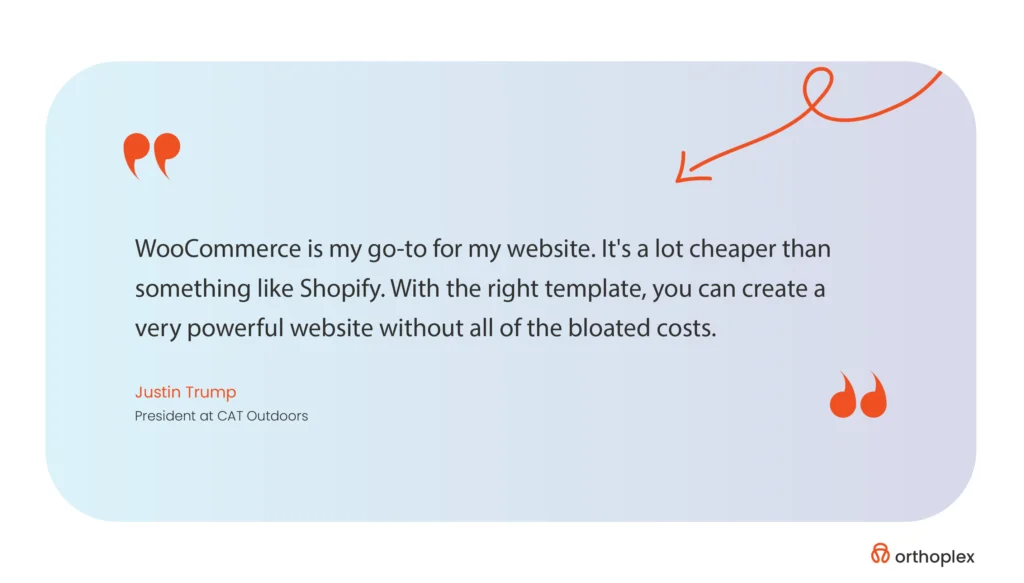
Security & Compliance: Keeping Customer Data Protected
Safeguarding customer data isn’t just a nice-to-have, it’s a cornerstone of any credible business. For retailers in Miami or B2B firms in Seattle, a single breach can unravel trust and revenue in an instant. With security threats evolving, understanding how Shopify, WooCommerce, and Magento improve your operation in 2025 is essential.
Shopify takes the lead with security baked right in, a boon for those who prefer not to micromanage the details. It’s PCI DSS compliant from the start, equipped with SSL certificates and automatic updates to fend off vulnerabilities, all handled seamlessly. For a small shop in Portland or a growing brand in Atlanta, this means robust protection without added effort, think $1 billion in fraud prevented annually. Developers value the low-maintenance approach, though customization options stay limited within its managed ecosystem. It’s reliable and straightforward, built for peace of mind.
WooCommerce shifts responsibility to you, offering flexibility at the cost of hands-on oversight. Staying PCI compliant requires securing an SSL certificate, keeping plugins current, and patching WordPress regularly, steps you can’t skip. Businesses in Minneapolis or Raleigh often pair it with hosting providers like SiteGround for added layers, but the onus remains yours to maintain.
Developers can bolster defenses with tools like Wordfence, crafting a tailored shield. It’s a strong setup for those willing to stay proactive, though neglect can expose weak spots.
Magento, now Adobe Commerce, brings enterprise-grade security to the table, designed for operations with intricate demands. Certified PCI Level 1, it offers two-factor authentication and advanced encryption, ideal for managing sensitive global data. Clients enjoy top-tier safeguards, but developers play a critical role, overseeing patches, hosting, and compliance checks to keep it airtight.
Mobile Optimization: Delivering a Seamless Shopping Experience
With mobile shopping driving over half of U.S. traffic in 2025 (Statista Mobile Traffic 2025), a smooth experience on phones isn’t optional, it’s the lifeblood of e-commerce.
For businesses chasing every sale and developers refining user journeys, mobile optimization can make or break customer loyalty. Let’s explore how Shopify, WooCommerce, and Magento perform for mobile shoppers this year.
Shopify excels with responsive themes that adapt effortlessly to any screen size. Whether free or premium, every design ensures a clean, functional storefront, perfect for clients in Phoenix or Boston who need it ready out of the box. A retailer in Orlando might see 30% faster checkouts lift conversions, a tangible edge. Developers appreciate the built-in polish, though deeper adjustments rely on apps or Liquid code. It’s a streamlined win for mobile-first priorities.
WooCommerce delivers solid mobile performance, but it hinges on your choices. Opt for a responsive WordPress theme, and clients get a sharp, navigable store, pick poorly, and the experience falters. Developers have room to refine it with CSS or plugins like WPtouch, tailoring it to fit. For a craft shop, it shines with the right setup, think Rothy’s boosting mobile sales through careful tuning. Clients need to test and tweak, but the flexibility pays off.
Magento supports mobile commerce with power, though it requires effort to get there. Its framework adjusts to devices, serving enterprise clients with complex needs, like multi-store apps for brands like Target. Developers dive into layouts and speed optimizations, often with custom code or extensions to perfect it (Magento Mobile Guide 2025). Clients rely on that expertise for a seamless result. It’s a heavyweight option that delivers when precision is applied.
Social Media & Marketing Integration
In 2025, tying social media and marketing automation together is key to turning scattered customer touchpoints into a unified sales engine. Picture a shopper clicking a TikTok ad, landing on your store, and getting a follow-up email, all linked effortlessly. For businesses, this blend of social reach and strategic tools can lift revenue significantly when done right. Here’s how Shopify, WooCommerce, and Magento bridge these capabilities to strengthen marketing efforts.
Shopify integrates social platforms like Facebook, Instagram, and TikTok directly into its dashboard. Clients can sync product catalogs, run ads, and track results without leaving the interface, no technical skills are needed. A retailer might see a 25% uptick in clicks from Instagram Stories, a clear win (Social Commerce Insights 2025). Developers find it efficient, though complex campaigns may call for extras like Hootsuite. It’s a practical, user-friendly choice.
WooCommerce leans on plugins to connect with social channels, requiring a bit more setup. Tools like WooSocial or StoreYa link Instagram or Pinterest, giving clients the freedom to customize their approach. Developers can integrate APIs or tweak code to match specific goals, say, expanding a Boise craft seller’s reach. It’s versatile, but clients should factor in time and potential plugin costs. The payoff comes with investment.
Magento offers powerful marketing features, though social integration often ties to third-party extensions. Built for enterprise clients, it aligns with Adobe’s analytics suite for advanced campaign tracking. Developers can weave in tools like Sprout Social to enhance it, but clients need technical support to unlock its full scope. It’s a sophisticated system, ideal for those with the bandwidth to leverage it.
Payment Gateways & Transaction Fees
For businesses aiming to maximize profits and developers ensuring smooth operations, payment processing needs to be flexible and cost-effective. With U.S. e-commerce sales topping a trillion dollars yearly (U.S. E-Commerce Forecast 2025), the right setup builds trust and protects margins. Here’s how Shopify, WooCommerce, and Magento handle payments in 2025.
Shopify centers on Shopify Payments, backed by over 100 gateways like PayPal and Stripe. Clients enjoy a cohesive checkout, though third-party options add fees, 0.5% to 2% per transaction atop standard rates. For a retailer, 90% of sales via Shopify Payments dodge extra costs, a streamlined perk. Developers like the ready integrations, but customization beyond defaults means app reliance. It’s efficient and balanced.
WooCommerce supports gateways like Stripe or Square with no platform fees, a plus for cost-savvy clients. Plugins drive the setup, offering flexibility to fit unique needs without overhead. Developers can configure or code custom flows, keeping it lean for small businesses aiming to preserve profits. Gateway fees still apply, but the control is hard to beat.
Magento delivers advanced payment options for enterprise-scale needs. It integrates with global players like Adyen or Braintree, handling multi-currency setups effortlessly. Clients gain sophistication, but developers manage the heavy lifting, implementation often requires custom work. It’s a premium choice for those equipped to run it.
Shipping, Taxes, and Multilingual Support
For businesses eyeing global markets or refining local logistics, shipping, taxes, and multilingual features are vital to efficiency and customer satisfaction. With cross-border e-commerce nearing $2 trillion by 2025, these elements shape your ability to reach customers from Seattle to Seoul. Let’s see how Shopify, WooCommerce, and Magento tackle these in 2025.
Shopify streamlines shipping and taxes with built-in tools that calculate rates and duties by location, linking to carriers like USPS or DHL. Clients can offer real-time rates, while support for 135+ currencies simplifies global sales. Multilingual options cover up to five languages (20 on Shopify Plus), a natural fit for a Montreal retailer serving English and French markets. Developers value the ease, though advanced needs tap third-party apps.
WooCommerce relies on plugins like WPML or WooCommerce Shipping & Tax for multilingual and logistical support. Shipping and tax rules adapt via add-ons, giving startups full control at a lower cost. Developers tailor it to exact specs, but setup takes effort compared to Shopify’s plug-and-play. It’s a flexible, budget-friendly path for those willing to build it out.
Magento excels with native tax engines, multi-currency tools, and scalable multilingual support, perfect for enterprises. It handles complex VAT rules and powers multiple storefronts in various languages. Clients benefit from this depth, but developers often need custom coding to optimize it. It’s a robust solution for global ambitions, backed by the right resources.
Customer Support: Where to Turn for Help?
When issues pop up, technical or strategic, reliable support can prevent costly delays and timely assistance is a must for businesses and developers. Here’s how Shopify, WooCommerce, and Magento stack up in 2025.
Shopify offers 24/7 live support via chat, email, or phone, plus a rich knowledge base for quick fixes or growth advice. Retailers or developers get fast, human help, crucial during busy seasons. Extensive guides and videos round out a system that’s both accessible and responsive.
WooCommerce thrives on community support, with forums connecting users for shared solutions. Direct help often ties to hosting plans from providers like SiteGround, keeping costs down for those who dig into self-service options. It suits independent users, though it lacks Shopify’s immediacy.
Magento provides premium support for enterprise clients with dedicated managers and 24/7 ticketing. Community editions lean on forums, but paid tiers shine for critical operations. It’s a high-value service for those with the budget to match.
Who Should Choose Which Platform?
Picking the right e-commerce platform isn’t just a technical choice, it’s a strategic one that can steer your business’s profitability and growth. With global online sales expected to surpass $7 trillion by 2025 (Global E-Commerce Trends 2025), the stakes are high. Shopify, WooCommerce, and Magento each serve distinct profiles in 2025, aligning with specific business sizes, skill sets, and ambitions, from startups to established enterprises.
Shopify is a natural fit for small-to-medium businesses, direct-to-consumer brands, and newcomers eager to hit the ground running. A startup can leverage its straightforward setup and intuitive tools, with no coding needed. With scalable plans and a rich app ecosystem, it supports steady growth without overwhelming those new to the game. It’s the top choice for anyone who values speed, simplicity, and dependable support over deep customization.
WooCommerce stands out for WordPress users who prioritize flexibility and cost savings. Picture an artisanal seller or a developer crafting a unique site, its open-source nature lets them shape every detail through plugins and code. This platform suits those with some technical comfort who want to avoid platform fees and maintain full control. The initial effort pays off with a bespoke solution tailored to niche needs.
Magento, now Adobe Commerce, is the go-to for large enterprises with demanding operations. A retailer managing multiple brands or a firm handling thousands of orders daily can harness its advanced capabilities, like multi-store setups and global scalability. It’s designed for teams with developers and budgets to support it, offering unparalleled depth. For businesses where complexity and performance trump simplicity, Magento is the standout option.
Conclusion: Which Platform Is Best for You?
Deciding between Shopify, WooCommerce, and Magento isn’t a universal answer, it’s a choice that hinges on your business’s unique needs in a market poised to hit $7 trillion globally by 2025.
Each platform offers distinct advantages, and the best one for you ties directly to your scale, technical resources, and future plans. To make it clear, consider a few critical questions alongside recommendations tailored to different scenarios.
Ask yourself: What’s my budget, and how much control do I want? How fast do I need to launch, and what skills does my team bring? Am I planning for global reach or high transaction volumes?
For a small business or DTC brand looking for a quick, low-hassle start, Shopify’s all-in-one design and 24/7 support shine. It’s built to get you live and selling without a steep learning curve or big upfront costs.
If you love customization, WooCommerce delivers flexibility on a budget. It’s perfect for those ready to invest time in setup for a store that’s entirely their own, great for niche sellers or small teams who prize independence. You’ll trade some ease for full ownership and no recurring platform fees.
For enterprise leaders managing complex needs, high volumes, multiple storefronts, or international markets, Magento’s powerful, scalable framework is unmatched. It’s the pick for those with robust resources and technical expertise, offering premium features for intricate operations. The investment is significant, but it’s justified for businesses where customization and scale are critical.
In the end, Shopify fits beginners and growing brands, WooCommerce suits customizers watching costs, and Magento powers enterprise heavyweights.
Assess your priorities, speed, control, or scalability, and choose the platform that matches where your business is now and where you aim to take it.

